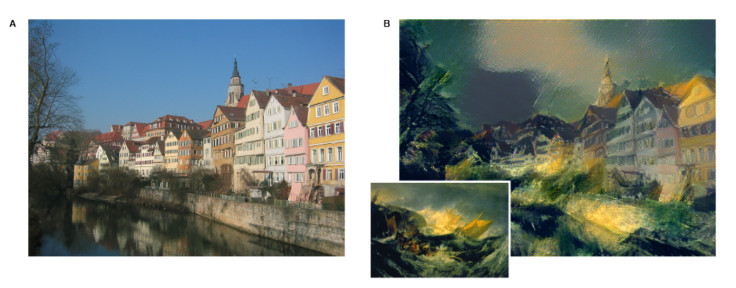German robot able to paint impressionist art just as well as Van Gogh using neural networks
Researchers from the University of Tubingen have developed an algorithm that allows an artificial neural network of computers to accurately learn how to paint just like famous artists.
In June, Google revealed that it had built sophisticated image recognition software that enabled its robots to see shapes in images, and that the AI neural networks had come up with some really crazy and psychedelic "inceptionism" images that applied the faces of dogs onto people's heads and inanimate objects.

Artificial neural networks are inspired by the human brain and are designed to simulate the way neurons behave when they are shown a sensory input, such as sound or images. Besides image recognition, the technology is being developed as a way to greatly improve weather predictions as well as medical diagnosis and detection of breast cancer.
Creating masterpieces in under an hour
But now German researchers have gone one step further, designing a deep learning computer algorithm that is able to distil and understand the essence of how a great masterpiece is painted, in terms of style, colours, technique and brush strokes.

When a photograph is fed to the computer, the computer can then turn the photo into an artistic painting using the painter's signature style, be it the work of artists like Van Gogh, Edvard Munch, Picasso or JM Turner.
The algorithm teaches the computer how to identify and separate the style and the content of images, so while the buildings and layout of the image stayed the same, the colours, lines and "local structures" changed to emulate the famous work of art that had been imputed into the system.

Using a series of paintings that included Van Gogh's The Starry Night, The Scream by Edvard Munch and The Shipwreck of the Minotaur by JMW Turner, the computer produced surprisingly beautiful results that still retained many elements from the original photograph.
No similar artificial system able to understand art
"In fine art, especially painting, humans have mastered the skill to create unique visual experiences through composing a complex interplay between the content and style of an image. Thus far the algorithmic basis of this process is unknown and there exists no artificial system with similar capabilities," the researchers write.

"The system uses neural representations to separate and recombine content and style of arbitrary images, providing a neural algorithm for the creation of artistic images."
The open-access paper, entitled "A Neural Algorithm of Artistic Style" is published on the Cornell University Library repository.
The researchers concluded: "In light of the striking similarities between performance-optimised artificial neural networks and biological vision, our work offers a path forward to an algorithmic understanding of how humans create and perceive artistic imagery."
© Copyright IBTimes 2025. All rights reserved.






















